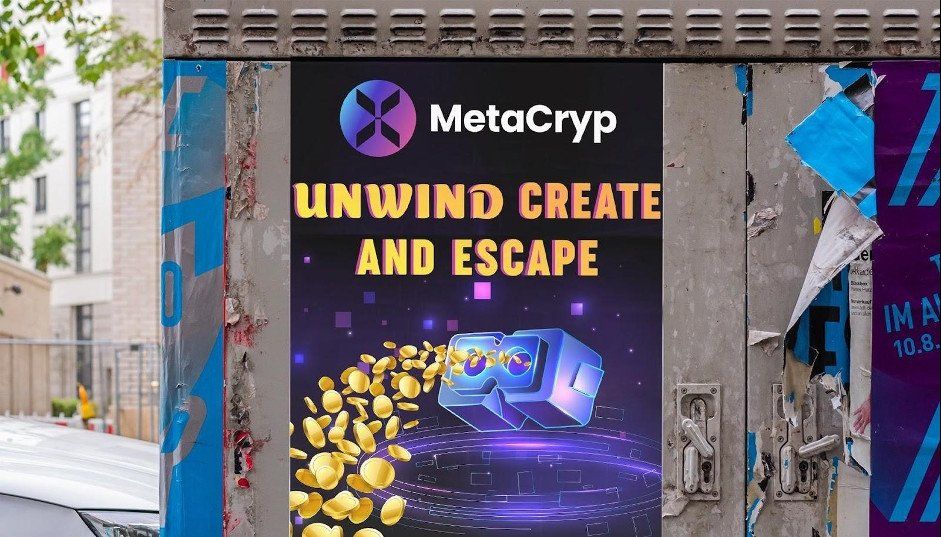MetaCryp, Eosio, and Ethereum are the heavy hitters of the blockchain industry.

Not many platforms take on the difficult task of bolstering and supporting the blockchain network because it is a huge undertaking. This is a task that has been taken up by MetaCryp (MTCR), Eosio (EOS), and Ethereum (ETH) in order to enhance the blockchain and cryptocurrency network.
Metacryp (MTCR)
Decentralization has left a glaring gap in the current community since it concentrated power and control over non-distributed systems in the bitcoin and gaming industries. Gaming platforms typically feature excellent gameplay, marketing, and aesthetics, but they frequently fall short of their potential due to their instability and players' inability to receive compensation for their time, money, and effort invested in the games. The following solutions are offered by the Metacryp (MTCR) platform to satiate players' demands and interests:
- An even distribution will facilitate quicker adoption and lower market risk.
- Complete decentralization to eliminate potential failure points and human control of the network.
- So that a party's dishonesty won't affect the performance of the system fairly, it must operate in an untrustworthy manner.
The fundamental building blocks for the expansion of the
- Metaverse and the GameFi (Game Finance) Ecosystem.
- Country club in the Metaverse: Metacryp (MTCR).
- P2E (play-to-earn) platform
- Vacation spots and locales.
Metacryp (MTCR) Tokenomics
- establishing a venue for unwinding, discovering, interacting with, and earning.
- Owners of tokens would be allowed to take part in important platform decision-making.
- easier user access to the metaverse
Eosio (EOS)
The next-generation blockchain network Eosio (EOS) attracted a lot of media attention due to its record-breaking ICO and distinctive features. A technology called Eosio (EOS) was created to make it simpler for the general public to program, integrate smart contracts, and create decentralized applications (dApps).
A platform called Eosio (EOS) enables the deployment of both private and public blockchain infrastructures as well as the construction and customization of value management architectures. As an open-source platform, it also enables businesses all over the world to build transparent digital infrastructures and lets third-party developers to build and run decentralized apps (dApps) on it.
Through its unique architecture, Eosio (EOS) minimizes pointless and wasteful transaction expenses. According to verified sources, Eosio (EOS) performs better in its TPS than major credit cards like VISA (transactions per second). Because it functions as an operating system for dApps, Eosio (EOS) is very similar to the Ethereum (ETH) platform in that it greatly simplifies the dApps programming process. The Eosio (EOS) borrows strategies from well-known blockchain goliaths to perform better. Due to these capabilities, Eosio (EOS) is competing with Ethereum for first place among dApps platforms (ETH).
Characteristics of the EOS token
- Swift, adaptable, and goal-oriented
- Excellent scaling capabilities for the blockchain sector.
- Platform for blockchain customization.
- Great data integrity and strong security.
- Rapid transactional rates.
Ethereum (ETH)
The second-most well-known cryptocurrency ecosystem, Ethereum (ETH), uses blockchain technology to power a decentralized, international software platform. The native token of Ethereum (ETH), which may be used by users to conduct transactions on the blockchain network, can be utilized to build secure digital technologies. Ethereum (ETH) was created in the early days of cryptocurrencies, and Vitalik Buterin, the project's creator, collaborated with a Swiss development company to finish its initial version in 2014. (GmbH).
The initial network of Ethereum (ETH) miners and investors was established after the Ethereum (ETH) ICO raised USD 18 million from a variety of investors. Developers can create decentralized applications on the Ethereum (ETH) platform (dApps). The Ethereum (ETH) blockchain network is currently operating financial toolkits, gaming platforms, complicated databases, etc. More sectors are anticipated to join. Ethereum (ETH), like Bitcoin (BTC), uses a modified Proof-of-Work (PoW) consensus algorithm.
In order to prevent malicious actors from flooding the network with unnecessary transactions, transactions on the Ethereum (ETH) platform can be resolved with Ether. Ether also serves as a reward for users that contribute resources and confirm mining transactions on the platform.
With these platforms in place, users, businesses, and the community can be certain that the cryptocurrency industry will develop smoothly, with enhanced functionality and financial upside.